Kevin Smith shared details about Weta FX‘s work on Godzilla vs Kong in 2021, before embarking on endeavors like Mr. Corman, The Flash, and Monarch: Legacy of Monsters.
In 2006, Ludovic Chailloleau kicked off his visual effects career at BUF, where he worked on the film Arthur and the Invisibles. Following this, he made stops at Framestore before ultimately joining Weta FX in 2013. His expertise contributed to the animation of notable films including The Jungle Book, Alita: Battle Angel, Lady and the Tramp, and Doctor Strange in the Multiverse of Madness.
What is your background?
Kevin Smith (KS) // I’ve been a VFX Supervisor for about 14 years and before that I did mostly lighting and look development but I’ve been around long enough to consider myself a generalist.
Ludovic Chailloleau (LC) // Drawing brought me to animation and French Art schools. I started working in the VFX industry as a generalist 20 years ago, then moved into animation to fully dedicate myself to my passion for storytelling.
How did you and Weta get involved on this show?
KS // I was the VFX supe on Weta’s previous work on Godzilla vs. Kong so this was kind of just a continuation of that work.
LC // Monsters and Kaiju are really great fun, nothing is big enough for animators!
What was your feeling to be back into the MonsterVerse?
KS // I find these films fun and the clients are great so it’s a pretty good experience.
LC // The MonsterVerse offers some great action, but this movie was offering a good section of pure performance bits between the main protagonists. To be able to express emotions without using language is something I really embraced. I did treat this as a silent movie. In the past, I had a great time working on the Apes trilogy and thought I could bring that experience to help build these characters and moments.
How was the collaboration with director Adam Wingard and VFX Supervisor Alessandro Ongaro?
KS // I have a good relationship with Adam from when I worked on Godzilla vs Kong and I had a great time working with Alessandro. I find both of them to be very collaborative and they were always happy to have Weta help them with the creative heavy lifting.
LC // Adam had a great energy making this movie and Alessandro was really good at passing it over to us. Feeling this motivation was a driving force to push us to pitch extra ideas to help serve Adam’s vision in the best way. This collaboration was surely one of the most efficient I have experienced, mainly because it was full of fun and passion.
What are the sequences made by Weta FX?
KS // We worked on the sequence where Kong meets Suko, and when they are in the lake environment where Kong fights the lake monster. We also did the scene where Kong and Suko eat, as well as when they go to Skar King’s lair and the Kong / Skar King / Shimo fight – that was a fun one. A few other key sequences include when Skar King’s war party goes to the Iwi village, when the pyramids collide, and the zero gravity fight.
What was the key inspiration behind the creation of King Kong and the other giant creatures?
KS // Kong and Godzilla are based on the previous movies, and the new characters – Suko, Skar King, Shimo, One Eye, and the great apes – are all based on client art and direction from them.
LC // Before starting the motion production, it was crucial to develop a basic character profile for each protagonist. Something to define them and to encapsulate the way they would move. We started by looking at their design specificities (Kong is older and suffers from a full life of solitude, Suko is an outcast, Shimo lives as a slave under constant pain and constraints, etc.)
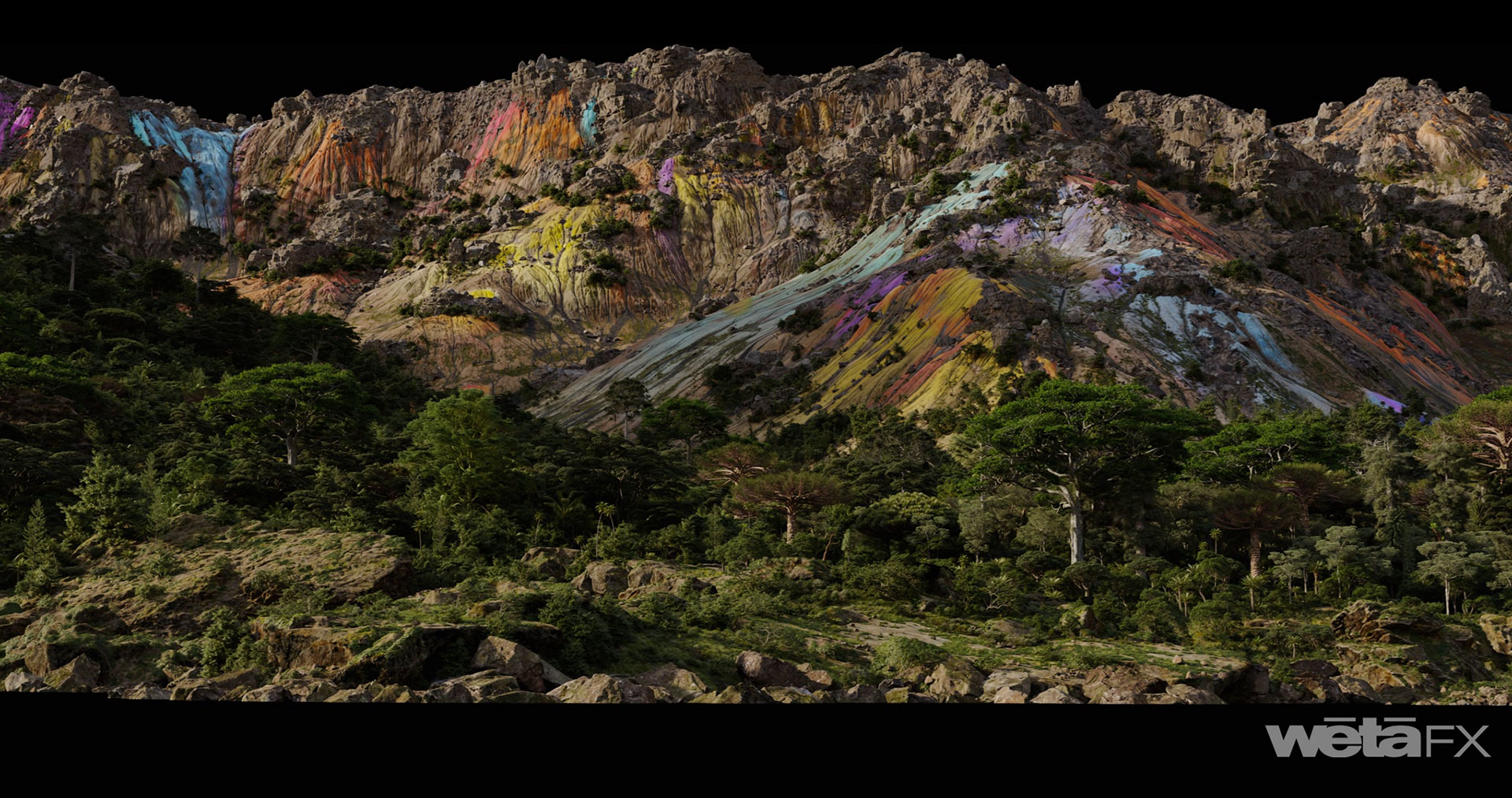
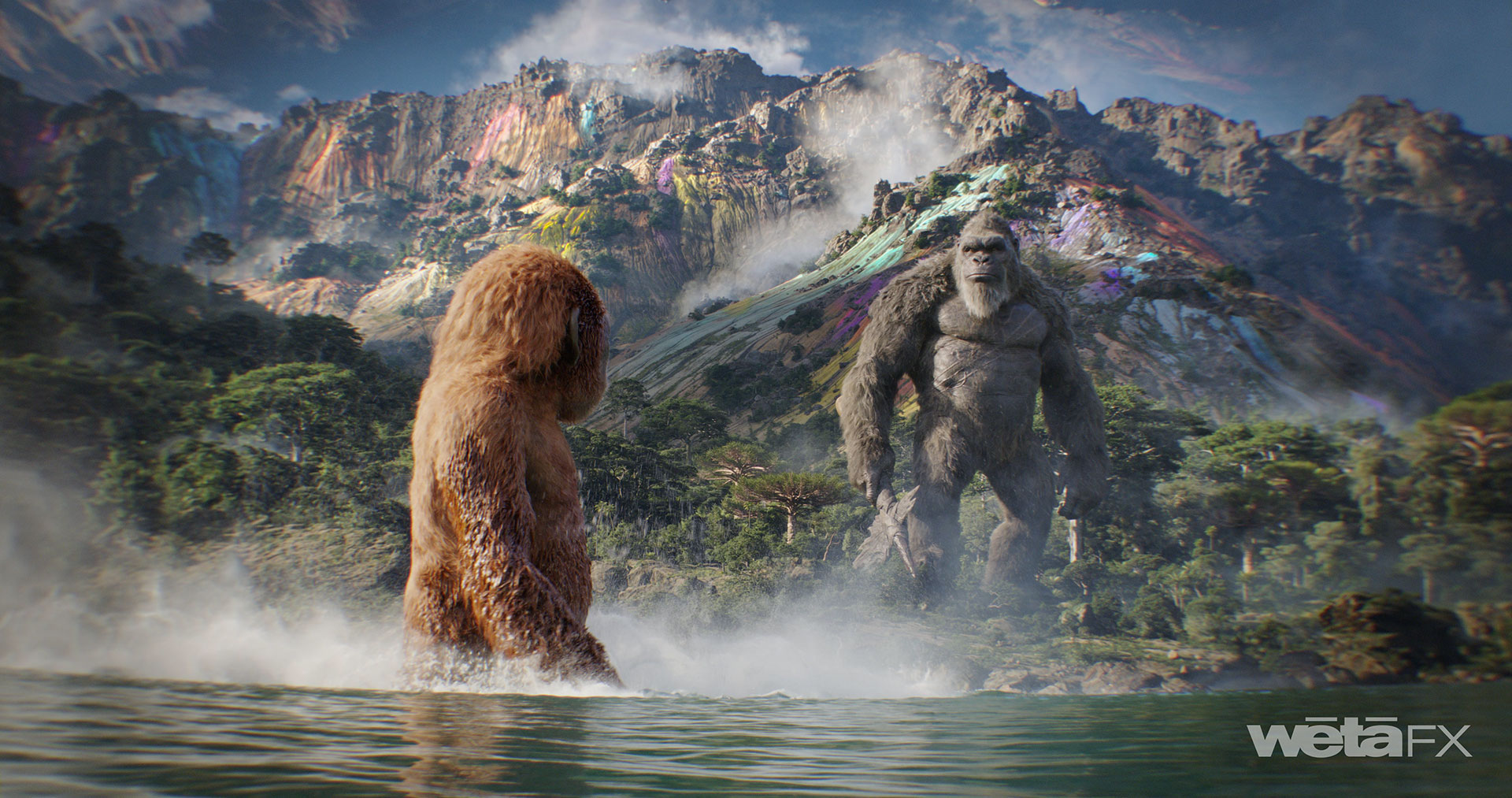
Could you walk us through the creative process behind bringing Kong and the other giant creatures to life, particularly focusing on the challenges of animating these iconic creatures?
LC // The creative process was constant through the production. Each shot had its main story and my focus was to serve it in the way that each character would do it, using their own specificities. Once I figured out each character’s behavior, I started to think about a language for each of them, very specific, in their body language, using their design to underline their personality and temperament. Kong has many primate references, but this movie is the first time we see him interacting with other titans.
We had to oversee more than 30 minutes of full CG characters. The main challenge is that you must bring the director’s vision to life and drive the character’s performances for him. So, to help this, after our initial tests, we worked with motion capture performers here at Weta FX – Allan Henry as Kong and Skar King, and Luke Hawker as Suko. The idea was to be able to sustain a constant unity in their body language, driven by each of their characters as defined earlier. Allan and Luke are great actors and have great physicality and emotional expression. Allan already had previous experience with Kong, and Adam was always clear on what he wanted to put in frame. So we started that way as a base before handing over the whole work to the motion department. Then the fun begins when you have to deal with different scale, speed, physics and timing!
What were some of the key visual inspirations or references that influenced the design and animation of Kong and the other giant creatures?
LC // Kong is a brute force, he mostly resolves problems relying on his strength, confronting his problems. So, we tackled his performances with that straight look, squared, symmetrical. A bit like Superman, in a sense. Most of his facial work was based on symmetrical expressions, mostly using his brows, not so much his lips, because of a habit of living alone without any social interactions.
The way we defined Skar King was the opposite. He is agile, the way he moves is sneakier, asymmetrical. We took some inspiration from gibbons for a few shots. He is always thinking ahead, cutting the way from behind. His facial performance is based on this, more expressive than Kong, looking from the side, more in economy of energy – slack but precise.
With advancements in CGI technology since the last installment, how did the animation team approach ensuring that these creatures appeared more realistic and expressive than ever before?
LC // We always give our best! For the new installment, it was important to have emotion being expressed through the eyes. We closely worked with Lighting on each sequence to establish the right angle and facial expression, for the light incidence to be effective and expressive.
Given the scale and magnitude of the battles between these colossal creatures, what were some of the technical considerations in animating their movements and interactions within the environments?
LC // One of my very first questions to Adam when we started was to query his vision for all camera language. Do we use long lenses? Will the camera be on the ground looking up? Will there be huge crane moves or helicopters to cover their performances?
His answer was simply no, once we are down in Hollow Earth with them, they are not monsters anymore. We are with them as characters with our classic way to cover actors’ performances. That was clear and did make a lot of sense! From that point we just did our best to keep them “big” in screen, but not “too slow.”
Can you discuss any specific techniques or innovations employed in the animation process to convey the emotions and personalities of Kong and the other creatures, particularly during their intense confrontations?
LC // The main challenge was to define the choreography before shooting so we could gather with the team and find the best way to break it down, bit by bit. Once we passed that step we had to figure out the scale difference between them. In term of facial performance, we went through all the work in key frame with our Facial department.
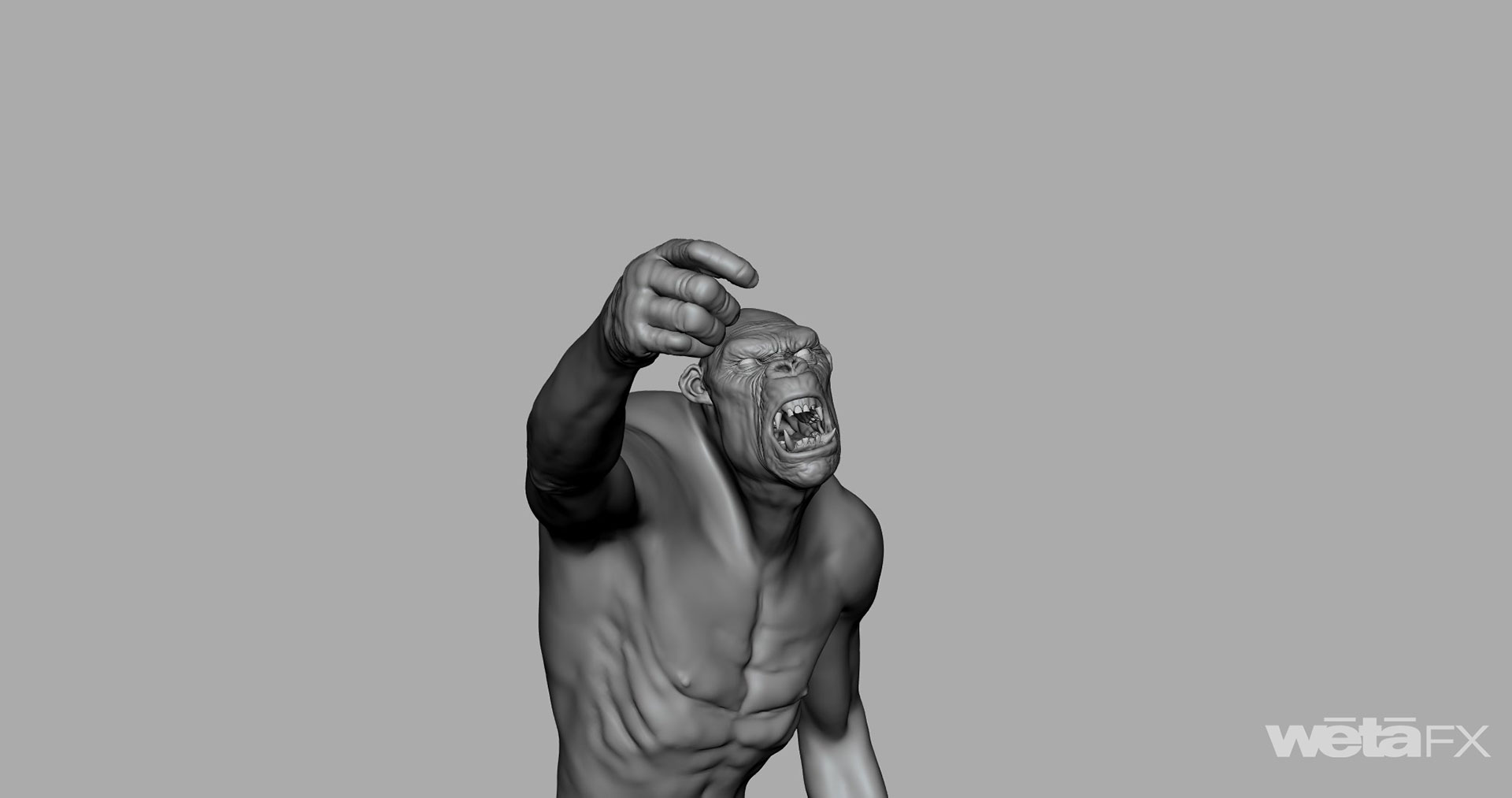
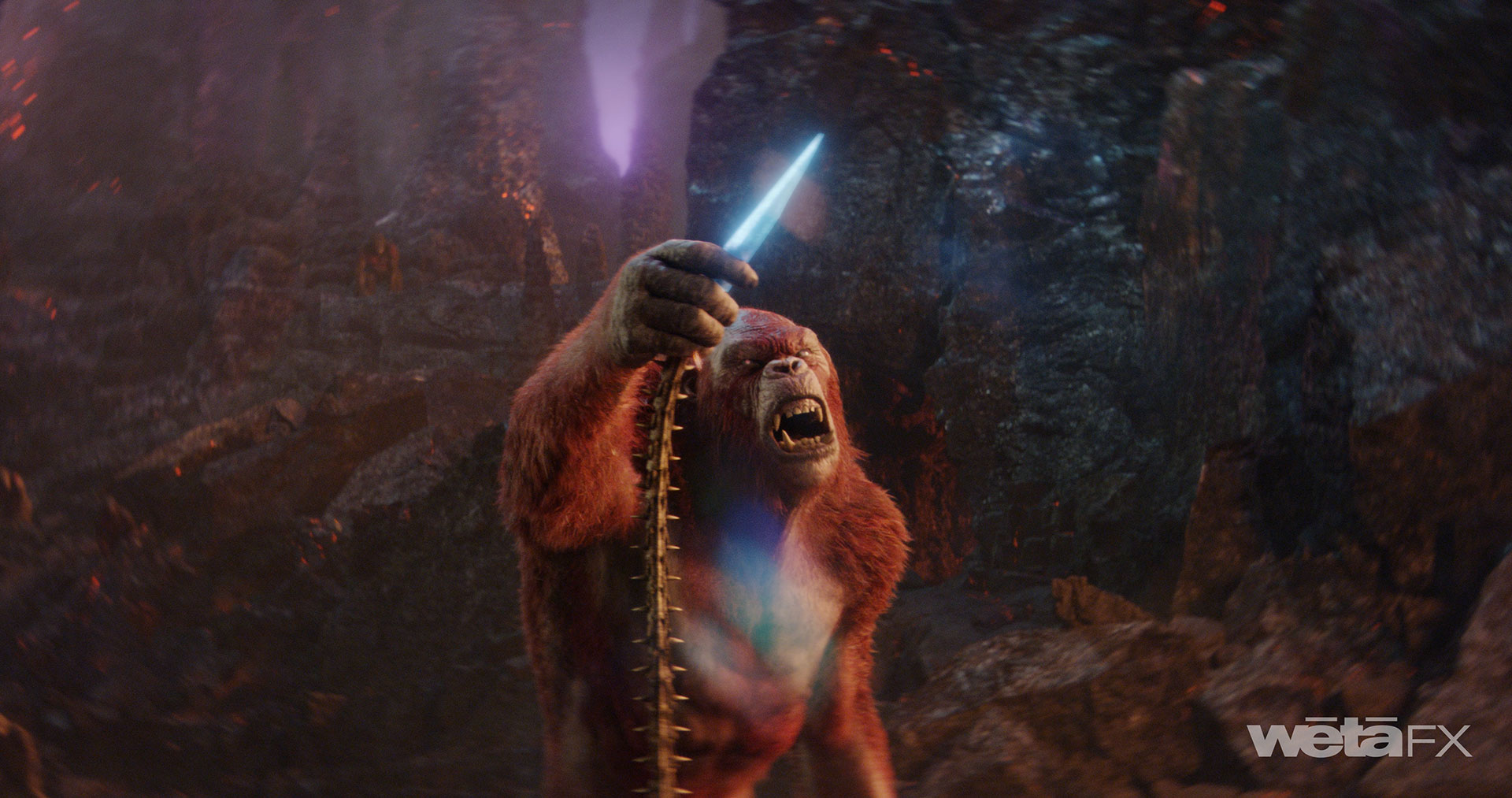
Can you elaborate on the process of designing the facial expressions for Kong and the other giant creatures?
LC // There are obviously a lot of experienced model artists who are able to really push the emotion in all facial expressions. We usually start from reference of something we like or client art that we’ve used as a base before, to extrapolate from.
We also had both Allan and Luke’s performance references to help with emotion and timing. Then, using these references, we established a workflow with the team to keyframe all shots as blocking to really ensure we had the idea of the shot before diving deep into it.
How did the team approach blending the iconic characteristics of Kong with modern motion capture technology?
LC // Some shots required special attention, like the one in the trailer where both Godzilla and Kong are running side by side together. For that one, Toho was deeply involved in the development of that special motion. We worked with them closely to maintain key features and avoid others.
What challenges did you face in bringing the animations of Kong and the other giant creatures?
LC // The key was to figure out the scale and speed of all creatures in a given shot. Shimo required some special treatment.
Could you explain the role of motion capture in capturing the nuanced facial movements of these colossal creatures?
LC // All the facial work has been keyframed based on actors and diverse reference, in relation to their size. These big creatures can’t really move a lot or with fast velocity. In that aspect, the intentions were always clearer when using a simple expressive pose with strong emotion in the eyes.
Were there any specific techniques or technologies employed to enhance the realism of the facial animations?
LC // For a few specific shots, we utilized technology from other projects, mainly to bring an extra layer of mass and detail into our facial movements.
Were there any particular scenes that posed significant challenges for animating Kong and the other creatures?
LC // The zero gravity sequence with both pyramids colliding on each other was a bit more challenging, in terms of motion and staging. Imagine the pitch: Gigantic titans are floating and fighting in a zero gravity environment full of floating rocks… We tried to really use that setup to enhance the characters’ behavior: Kong and Shimo take time to adapt but Godzilla is in its environment and moves from rocks to rocks like he would do under water.
What insights from animal behavior were integrated into the animations?
LC // A lot! All examples are in nature. We did gather a fair amount of reference for our work – mainly primate-like spider monkeys, gibbons or even orangutans for Skar King, baby gorillas for Suko. For Shimo, we used all sorts of feline and big cat reference, to really contrast with Godzilla.
Can you elaborate about the various fight choreography?
LC // I always loved choreography, it is the apex of storytelling with momentum ingested! We started first with a clear discussion to define what action would make sense for each shot, trying to keep a flow going across all shots in the cut. Then we broke down the staging with Allan and Luke, thinking about the flow of actions. Once capture was ingested, the camera and the story beats were the most important keystone.
Which creature was the most complicate to animate?
LC // Of all the titans, Shimo was the most challenging. Not saying that she was hard to work on, but unlike the other titans she is mainly a quadruped, which means that she is fully key framed. But we did not want her to be just a dog, so we tried different selections using bits of felines, bits of snakes, bits of cats… This did help us to drive a discussion with Adam in regard to her proportion design, dictated by her biomechanics. This is a key protagonist, so we had to develop her personality to establish a proper character and give her some space on the screen among the others. Apart from that, when you see the amount of crystals she has on her back, the most challenging part for us was to find a way for Skar King to be able to ride her and stand on her back.
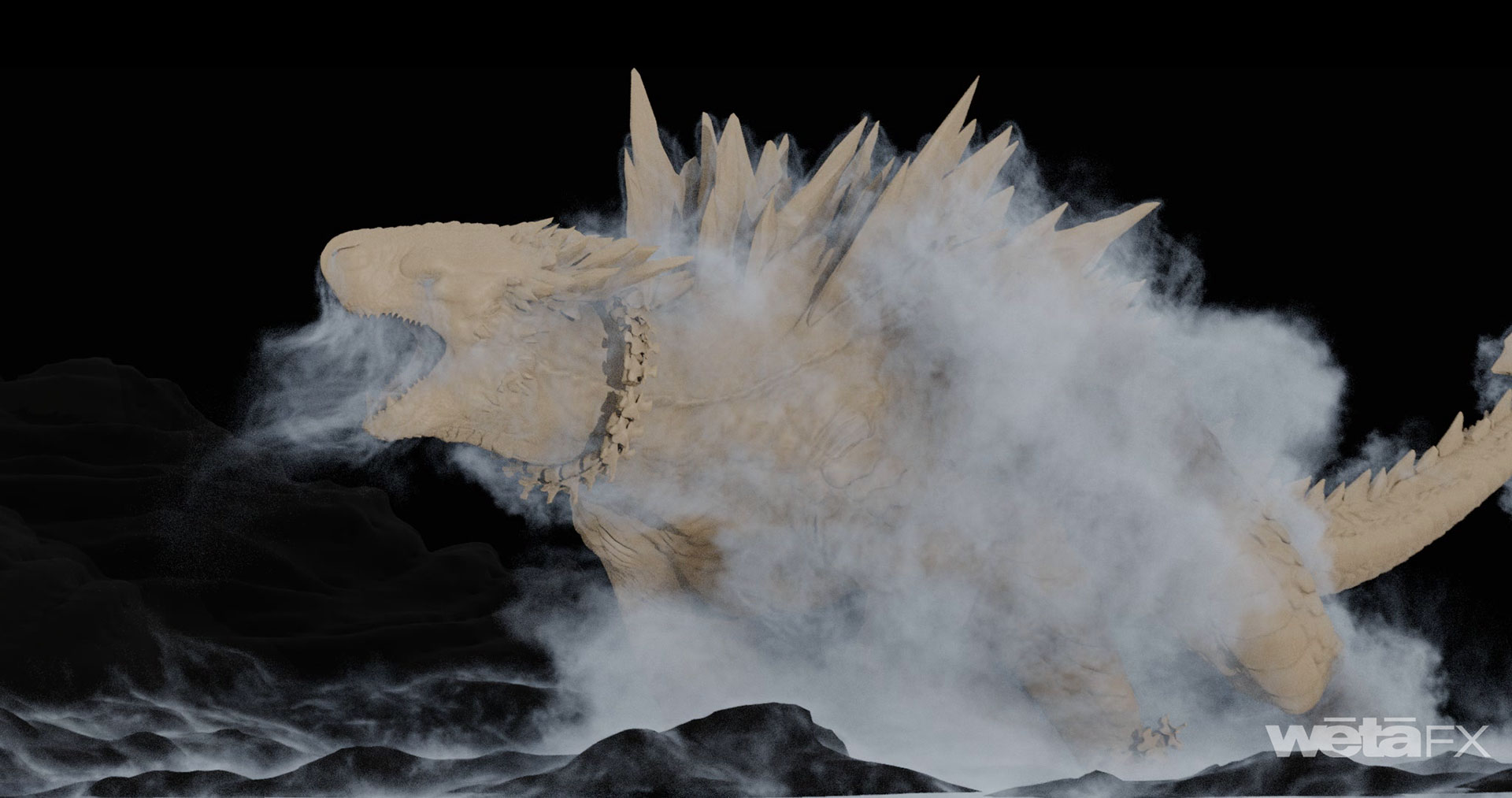
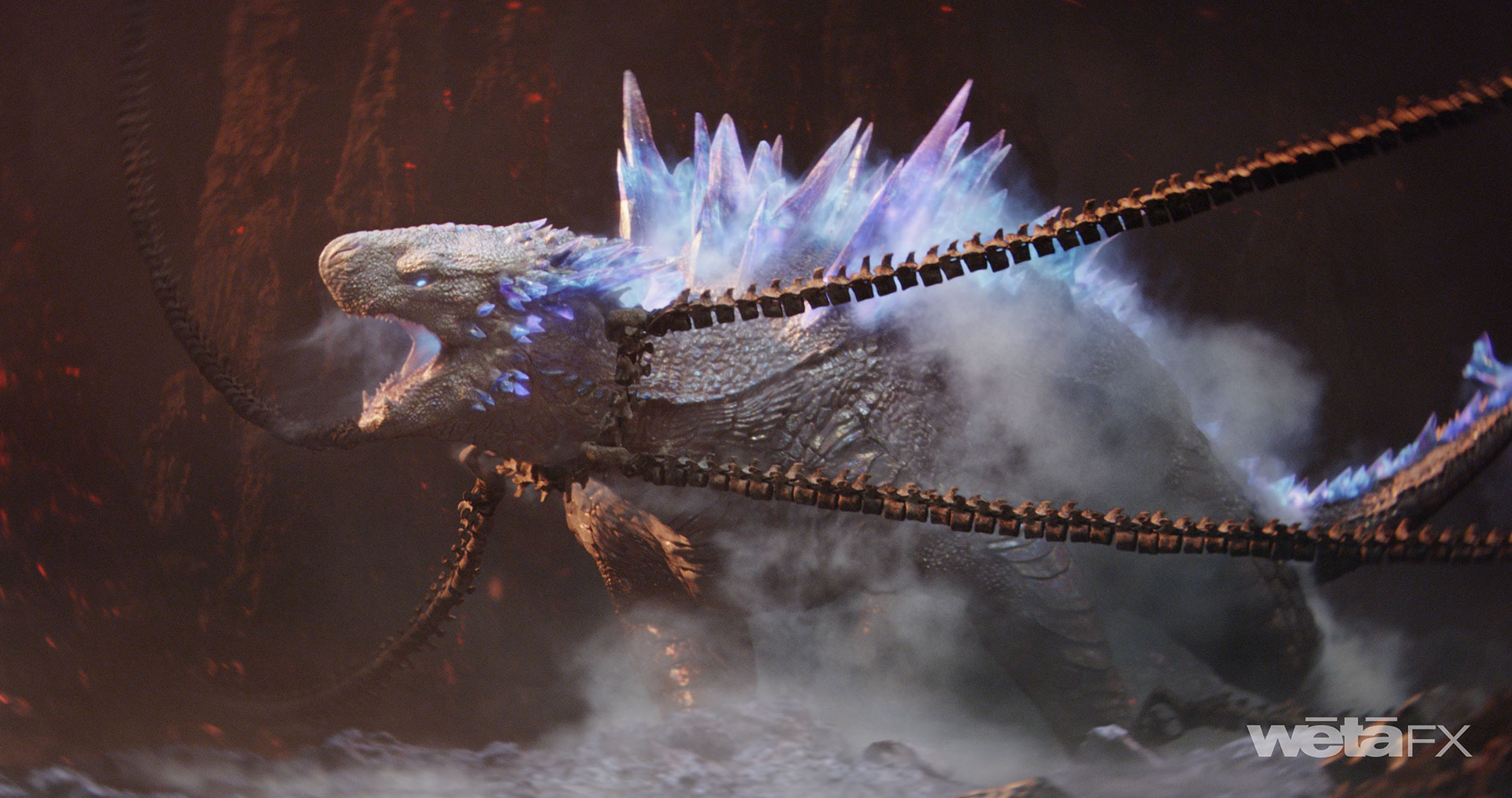
Can you walk us through the inspiration behind the creation of Hollow Earth’s various zones, such as the lush forests, molten lava regions, serene lakes, and crystal pyramids?
KS // We got concept art and reference from the clients and used that as a jumping off point for development. There was a lot of reference from Iceland that the clients were quite fond of, which informed a lot of the decisions we made for environment builds. Of course, it’s still Hollow Earth, so it’s not really like Iceland but we used a lot of color and shape details from the reference in our builds.
Hollow Earth offers a rich variety of environments, from the tranquil beauty of its lakes to the perilous landscapes of molten lava. How did you approach the challenge of scale and lighting?
KS // We applied everything we learned on Godzilla vs. Kong. Don’t scale the trees up because it has the opposite effect of what you want – it just makes the monsters seem smaller. And you only need to establish a source of light one time at the beginning of the movie and once you do that, if the lighting feels ‘outside’ and you keep the light source offscreen, no one will ask the obvious « where does the light come from? » question.
Were there any memorable moments or scenes from the film that you found particularly rewarding or challenging to work on from a visual effects standpoint?
KS // I enjoyed that we got to do big monsters fighting, while at the same time getting to essentially make a silent movie and tell the story of Kong and Suko’s friendship. Big monsters fighting is one thing, but big monsters acting is next level.
LC // I really like the first time Kong meets Suko. Having the opportunity to feature big monsters not necessarily for a fight, but just for a simple emotional connection using pure performance, was quite satisfying and pleasant!
Looking back on the project, what aspects of the visual effects are you most proud of?
KS // Since a lot of what we did is kind of riffing off established Monsterverse IP, personally I’m very proud of how the Shimo character came out. She’s an interesting character and the crystal spine, iridescent skin, and freeze breath were quite challenging from a look dev perspective – I think she looks amazing.
LC // Suko’s character has something simple and endearing. He forms a good pair with Kong and their bond is quite communicative.
Which sequence or shot was the most challenging?
KS // We didn’t really have any one particular part that stood out. The level of difficulty was fairly uniform across all our sequences.
LC // Kong eating with Suko was challenging from a facial motion aspect, but not especially difficult.
Was there something specific that gave you some really short nights?
KS // Only the deadline!
LC // Nothing, I am a good sleeper!
What is your favorite shot or sequence?
KS // I love the misty, mysterious look of the environment when Kong meets Suko, as well as when we first see Shimo really starting to charge up to attack Kong.
LC // I like when Kong meets Suko for the first time, as well as when Kong meeting Skar King for t he first time. Especially that arm drag on the ground that Skar King does the first time he is walks out of his throne room and and looks down at Kong.
Tricky question, are you team Godzilla or King Kong?
KS // Kong and Suko are really the heart and soul of this movie so I’ll have to say Team Kong on this one.
LC // That’s a hard one, the motion team is split into two camps! But I personally enjoy the human vibe of Kong and Suko
What is your best memory on this show?
KS // This was a great show, with an amazing crew and really great clients, just overall a good time.
LC // The whole show is one of my best memories! I feel that the team and clients were a perfect combination.
How long have you worked on this show?
KS // I’ll end up having been on the show for about 20 months.
LC // I did not count.
What’s the VFX shots count?
KS // 417.
What are the four movies that gave you the passion for cinema?
KS // Star Wars, Jurassic Park, Die Hard and…
LC // Akira, Eternal Sunshine of the Spotless Mind, Le Grand Bleu, Terminator, E.T.
A big thanks for your time.
WANT TO KNOW MORE?
Weta FX: Dedicated page about Godzilla x Kong: The New Empire on Weta FX website.
Alessandro Ongaro: Here’s my interview of Production VFX Supervisor Alessandro Ongaro.
© Vincent Frei – The Art of VFX – 2024






